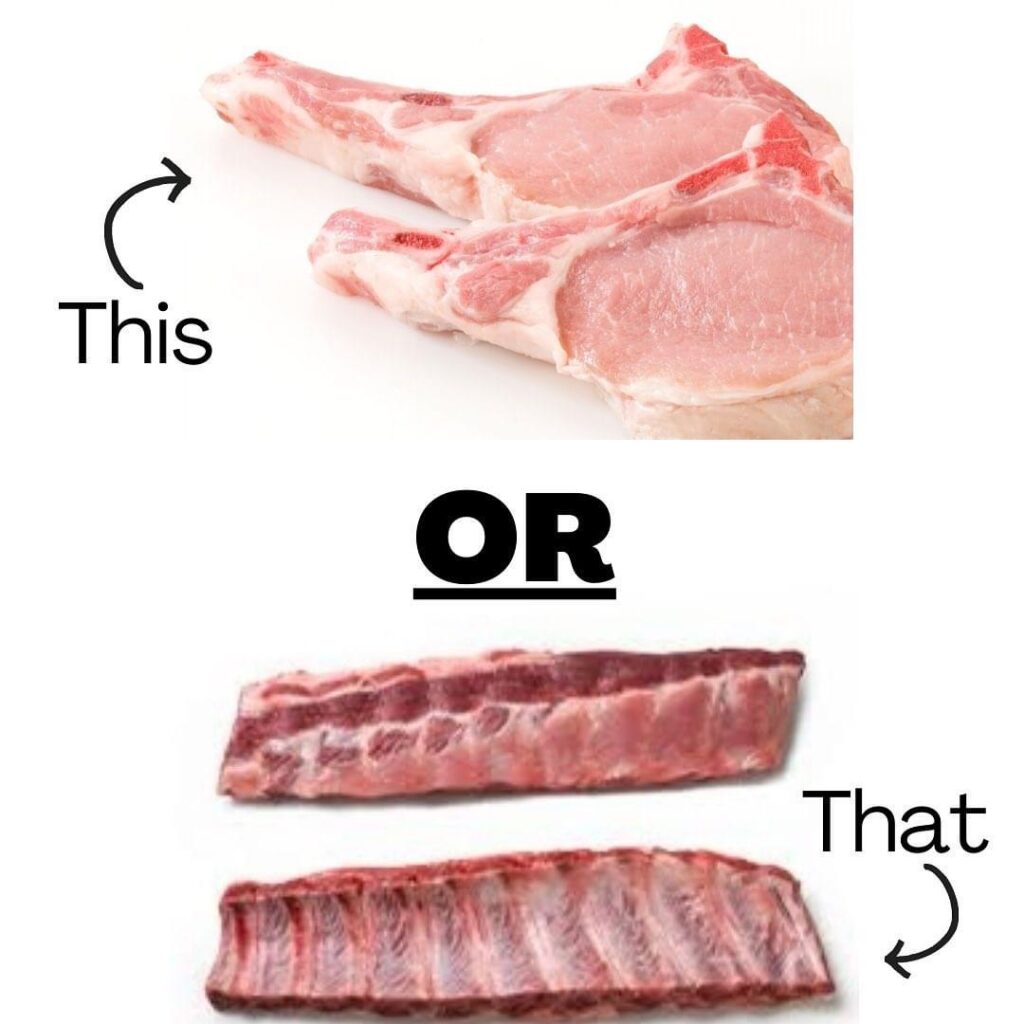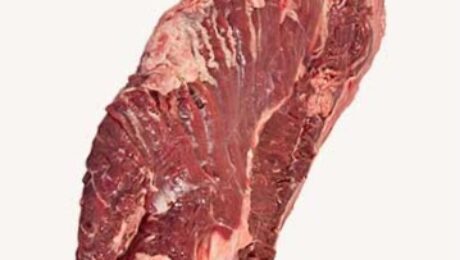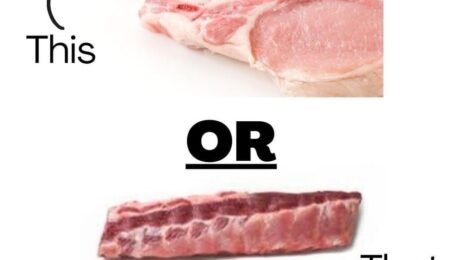TRI-TIP

The name is in reference to its triangular shape and its placement at the tip of the Sirloin primal. It is also known as the ‘Triangle Roast’ and ‘Bottom Sirloin Roast’.
The Tri-Tip is a flavor-filled favorite for a reason — it looks like steak, slices like brisket, and yet it has the beefy flavor of a sirloin. Cooked right and carved across the grain, it is moist and succulently tender with an easy chew. It does have a good amount of fat on the cap and some moderate marbling, which offers a recognizable buttery taste that usually comes from more expensive cuts like the Ribeye.
Back in 1950’s California, a handful of butchers began spit roasting the tri-tip alongside ready to go hamburgers, and it quickly became a new favorite and lucrative ‘grab and go’ hot food offering for the masses. It is now established as a BBQ and smoker favorite among the West coast.
With solid flavor and so much meat on offer, preparation can be as involved or as easy as you want it to be.
The most popular method is a dry rub before smoking or a strong marinade that will battle the big beefiness of the meat. *I recommend marinading if cooking it over medium.
But, if you like things simple, you need only a good seasoning with salt and pepper in preparation to cook it in the oven, or just salt if placing it on the grill.
Cut into steaks or kept as a whole roast, this cut is truly incredible either way and I love the versatility!
- Published in Meat Cuts
What is the Hanger Steak?

A hanger steak, also known as the butcher’s steak or the hanging tenderloin, is a cut of beef steak prized for its flavor. This cut is taken from the plate (the upper belly of the animal) where it supports the diaphragm. In the past, it was known as the “butcher’s steak”, because butchers would often keep it for themselves rather than offer it for sale. This is because the general populace believed this to be a crude cut of meat, although it is actually one of the most tender.
The hanger steak resembles the flank steak in texture and flavor. It is a vaguely V-shaped pair of muscles with a long, inedible membrane running down the middle.
The only problem is… there’s only ONE per animal. 
Since this cut comes from a supportive muscle, rather than an active muscle, it is more tender, but can be tough when improperly prepared. The tenderness suffers when exposed to long periods of dry heat, but… who would dare insult such a ‘rare’ cut of beef by cooking it above medium rare anyway??? 
- Published in Meat Cuts
Bone-In Pork Chops-or-Baby Back Ribs

Baby Back Ribs are the same bones used in Bone-In Pork Loin Chops. This means you can have Baby Back Ribs + Boneless Pork Chops OR you can have Bone-In Pork Chops.
Indecisive? When cutting a whole animal, you can always cut half one way and half the other and try them all!
This right here is one of the biggest motivators behind Backyard Butchery.
The entire process of taking your animal to the butcher will result in raising their stress levels, no matter how you cut it. You’re separating your animal from its herd, then loading, traveling, and unloading at the butcher shop. But it doesn’t stop there. That animal is likely penned up in an area with a lot of other stressed out animals, without food, for up to 24hrs. It’s then sent through a chute, one at a time, to be dispatched. There’s a good chance your animal doesn’t want to walk straight towards that smell or be driven by strange people, in which case, an electric prod or tail twisting is the typical method to get them moving. And all of this is magnified if your animal is injured.
The problem with all of that, aside from putting your animal under enormous stress, is how that stress adversely effects the quality of your meat. The very thing you spent months or years preparing and caring for, can go right down the drain within 24hrs before slaughter.
Stress alters the meat quality, compromising the main attributes that involve it, like physical color, pH, WHC (muscle fiber density), WBSF (Warner-Bratzler shear force), which affects meat tenderness and meat quality, and lipid oxidation, among others.
This is why we come to you. Reduced stress = better tasting meat. Period.
- Published in Meat Cuts
Why do we call it the ‘Boston Butt’?
“If you believe the Internet, it came from shipping practices. Back in the colonial days, an article in Mental Floss explains, New England butchers took “less prized cuts of pork,” packed them into barrels, and shipped them off to other places. “The barrels the pork went into were called ‘butts'”, the author explains. “This particular shoulder cut became known around the country as a New England specialty, and hence it became the ‘Boston butt.'”
The New York Times and other reputable publications have repeated this story, but common sense should make us skeptical. Can you think of any other food named for its shipping container name? There are plenty of historical problems with this explanation, too. For starters, Virginia and North Carolina, not New England, were the centers of the pork trade in the 18th century until eclipsed by Cincinnati in the 1830s and then by Chicago. I have searched high and low but cannot find a single printed use of the term “Boston butt” in the colonial era or even before the Civil War.
The term originated in the late 19th century, as railroads transformed the commercial meat packing industry from regional to national. Butchers in different parts of the country had slightly different ways of carving up pigs and cows. Other states and cities lent their names to various cuts as national packers standardized butchering. Thus we have New York Strip steaks and St. Louis-style ribs—another favorite of Southern barbecue cooks.
The pork shoulder originally had several other geographically-named cuts. In the meatpacking trade, the Kansas City Sun reported in 1892, “careful requirements are formulated for standard sweet pickled hams and shoulders, New York shoulders, Boston shoulders, California hams, skinned hams, pickled bellies, etc.”
According to agriculture journals and meat cutter manuals from the early 20th century, New York shoulders had the shank “cut off above the knee, trimmed close and smooth, and square at the butt.” A “California ham” was not ham at all. It was “well-rounded at the butt, and trimmed as near to the shape of a ham as possible.” This latter cut was also known as the “picnic” (for reasons I’ve been unable to discover), and that term is now the standard for the lower part of the pork shoulder.
As the use of “butt” in these agricultural manuals suggests, the name of the Boston-style cut had nothing to do with shipping containers. Consider the butt of a rifle or a cigar butt. Either crafty Bostonians were putting all sorts of things in barrels and shipping them south, or “butt” was simply a generic term for, as Merriam-Webster phrases it, “the large or thicker end part of something”—the pork shoulder, in this case. “
- Published in Meat Cuts






